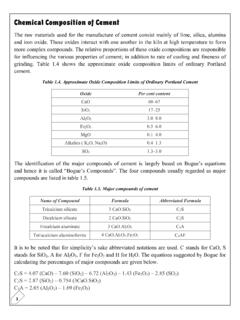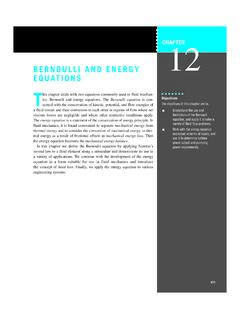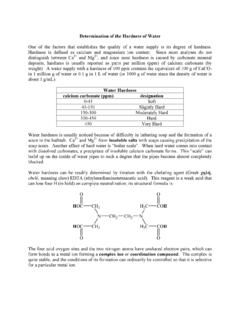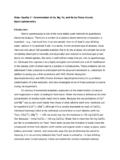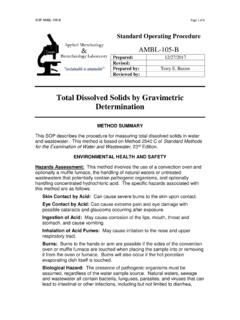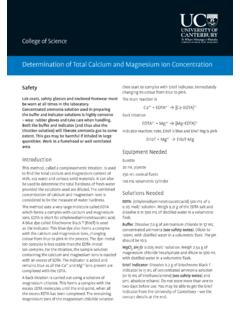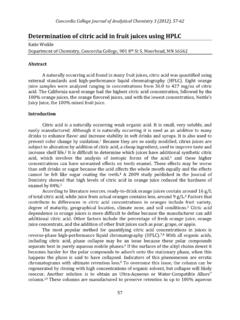Transcription of ESTIMATION OF HARDNESS OF WATER BY EDTA METHOD
1 VITS Engineering Chemistry Lab Manual 1 ESTIMATION OF HARDNESS OF WATER BY EDTA METHOD Experiment No.. Date:.. Aim: To estimate the amount of total HARDNESS present in the given sample of WATER by EDTA titration METHOD . Apparatus required: 50 ml Burette, 20 ml Pipette, 250 ml Conical flask, 100 ml Beaker, 250 ml beaker, Glass funnel. Reagents: EDTA solution, Standard CaCO3 solution, Eriochrome Black T indicator, Buffer solution. Theory: EDTA (Ethylenediamine tetra acetic acid) forms colorless stable complexes with Ca2+ and Mg2+ ions present in WATER at pH = 9-10. To maintain the pH of the solution at 9-10, buffer solution (NH4Cl + NH4OH) is used.
2 Eriochrome Black-T ( ) is used as an indicator. The sample of hard WATER must be treated with buffer solution and EBT indicator which forms unstable, wine-red colored complex s with Ca2+ and Mg2+ present in WATER .. CH2CH2 NNCH2CH2CH2CH2 COOHCOOHHOOCHOOCS tructure of EDTAVITS Engineering Chemistry Lab Manual 2 Procedure 1. Standardization of EDTA (i) Pipette out 20 ml of standard hard WATER into a conical flask. (ii) Add 5 ml of buffer solution and few drops of Eriochrome Black-T. The indicator, which is originally blue color would acquire a wine-red color. (iii) Titrate with EDTA solution taken in the burette, till the wine red color changes to blue which is the end point.
3 Let the burette reading of EDTA be V2 ml. 2. determination of Total HARDNESS Repeat the above titration METHOD for sample hard WATER instead of standard hard WATER . Let the burette reading of EDTA be V3 ml. 3. determination of Permanent HARDNESS Take 100 ml of sample hard WATER in 250 ml beaker. Boil it to remove temporary HARDNESS to about half of this volume and cool to room temperature. Filter through filter paper to remove insoluble CaCO3 and MgCO3. Make up the volume to the original 100 ml by adding distilled WATER . Now pipette out 20 ml of this solution into a clean conical flask. Then repeat the process of titration steps as mentioned above. Let the burette reading of EDTA be V4 ml. Observations 1. Standardization of EDTA Vol.
4 Of Hard WATER taken (ml) Burette Reading Vol. of EDTA Consumed (V2 ml) Initial Final 1. 2. 3. VITS Engineering Chemistry Lab Manual 3 2. determination of Total HARDNESS Vol. of Hard WATER taken (ml) Burette Reading Vol. of EDTA Consumed (V3 ml) Initial Final 1. 2. 3. 4. determination of Permanent HARDNESS Vol. of Hard WATER taken (ml) Burette Reading Vol. of EDTA Consumed (V4 ml) Initial Final 1. 2. 3. Calculations 1. Standardization of EDTA M1V1 = M2V2 Where, M1 = Molarity of standard hard WATER V1 = Volume of standard hard WATER in conical flask M2 = Molarity of EDTA V2 = Volume of EDTA consumed (burette reading) VITS Engineering Chemistry Lab Manual 4 2.
5 determination of Total HARDNESS M2V2 = M3V3 Where, M3 = Total HARDNESS of sample WATER V1 = Volume of sample hard WATER in conical flask 3. determination of Permanent HARDNESS M2V2 = M4V4 Where, M4= Permanent HARDNESS of sample WATER V4 = Volume of sample hard WATER in conical flask Note: Multiply M3 and M4 with 105 to covert HARDNESS into parts per million (ppm). 4. determination of Temporary HARDNESS Temporary HARDNESS = Total HARDNESS Permanent HARDNESS Result: The HARDNESS of the given WATER sample has been found to be as follows: Total HARDNESS = ------------------------------------ ppm Permanent HARDNESS = ------------------------------ ppm Temporary HARDNESS = ----------------------------- ppm VITS Engineering Chemistry Lab Manual 5 ESTIMATION OF MANGANESE DIOXIDE IN PYROLUSITE Experiment No.
6 Date:.. Aim: To estimate the amount of manganese dioxide (MnO2) present in the given sample of pyrolusite Apparatus required: 50 ml Burette, 20 ml Pipette, 250 ml Conical Flask, Funnel, 250 ml Beaker, 100 ml Measuring cylinder. Reagents required: Manganese dioxide, Oxalic acid (N/10), Dil. H2SO4, KMnO4 (N/10). Theory: Manganese dioxide occurs in nature in the form of pyrolusite. Pyrolusite is not only used as a source of manganese but also as an oxidizing agent in many industrial processes. For such purposes, the ore is graded on the basis of its available oxygen content rather than its percentage of manganese since in many cases the pyrolusite contains less available oxygen than that corresponding to the formula MnO2.
7 The MnO2 present in the pyrolusite sample is reduced to a known excess of standard oxalic acid as acidic medium. The unreacted oxalic acid is titrated against the standard solution of KMnO4. MnO2 + H2SO4 + H2C2O4 2CO2 + 2H2O + MnSO4 Procedure: Weigh about finely powdered dry pyrolusite sample into a 250 ml conical flask and add 40 ml of standard N/10 oxalic acid. Add 40 ml of 10% H2SO4 and place a small funnel over the conical flask. Boil the contents of the flask gently until no black particles are visible in the flask. Allow it to cool about 60-70oC and titrate with standard KMnO4 solution. End point is indicated by appear in a pale pink color. VITS Engineering Chemistry Lab Manual 6 Observations Volume of oxalic acid (ml) Burette Reading Vol.
8 Of KMnO4 consumed (ml) Initial Final 1. 2. 3. Calculations Weight of the sample = W gm Volume of N/10 oxalic acid added = 40 ml Volume of N/10 oxalic acid used against W gm of pyrolusite = (40-V) ml Weight of MnO2 in W gm of the sample = (40-V) ml of solution ()40 V x Normality of oxalic acid x Atomic Wt. of Mn x 100% of Mn = 1000 x Sample weight ()40 V x x x 100% of Mn = 1000 x Sample weight Where, V = Burette reading Result: The percentage of manganese present in the given pyrolusite sample is .. VITS Engineering Chemistry Lab Manual 7 determination OF PERCENTAGE OF COPPER IN BRASS Experiment No.. Date.
9 Aim: To determine the percentage of copper in the given brass sample. Apparatus required: 50 ml Burette, 20 ml Pipette, 250 ml Conical Flask, 100 ml Measuring cylinder. Reagents required: Standard hypo solution (N/10), Conc. H2SO4, Phosphoric acid, Ammonia solution, Potassium iodide, Starch indicator, Brass sample, Potassium thiocyanate. Theory: Brass is an alloy of copper and zinc. It may also contain a small amount of lead, tin or Aluminum. The composition of brass is: Cu (60-80%) and Zn (20-40%) along with small amounts of Pb (0-2%); Sn (0-6%) and Fe(0-1%). This Experiment consists of dissolving a known quantity of brass in nitric acid, removing the nitrate by fuming with sulphuric acid. Adjusting the PH by ammonium hydroxide, complexing the iron present using phosphoric acid and finally titrating the copper ions with hypo (sodium thiosulphate- Na2S2O3) by iodometric METHOD .
10 When the brass sample is dissolved in nitric acid, the copper present is brought into solution in the form of cupric ions. At the same time, tin is converted to metastannic acid ( ) lead and zinc ions are oxidized to their respective soluble divalent ions, while iron is converted into ferric ions. During the treatment with sulfuric acid nitrate is eliminated, the meta-stannic acid is re-dissolved and lead ions are precipitated as PbSO4 while all other metals go into solution as their respective sulphates. Out of all the metal ions present in solution, only Cu+2 and Fe+3 are reducible by iodide. The interference by iron is eliminated by complexing it with phosphate ion. Then, the Cu+2 ions can be determined by iodometric METHOD 2Cu+2 + 4 I - 2 CuI + I2 2S2O3- + I2 S4O6- + 2I- Cu I S2O3- VITS Engineering Chemistry Lab Manual 8 Procedure: A piece of clean and dry brass sample is cut into small pieces.
